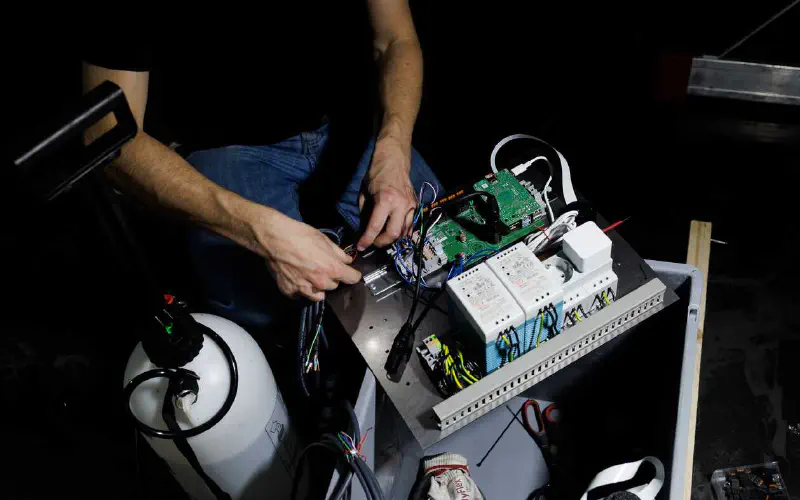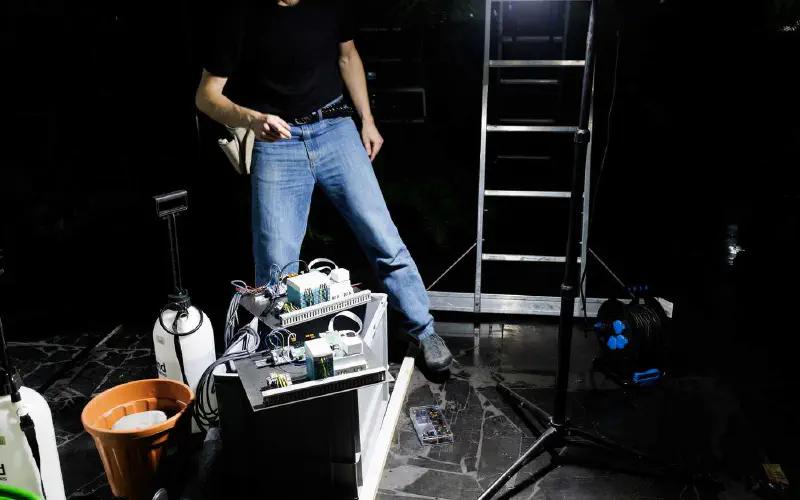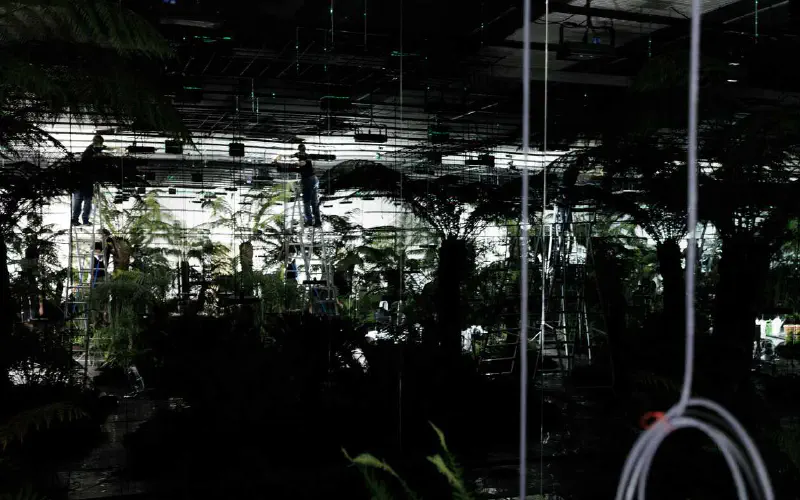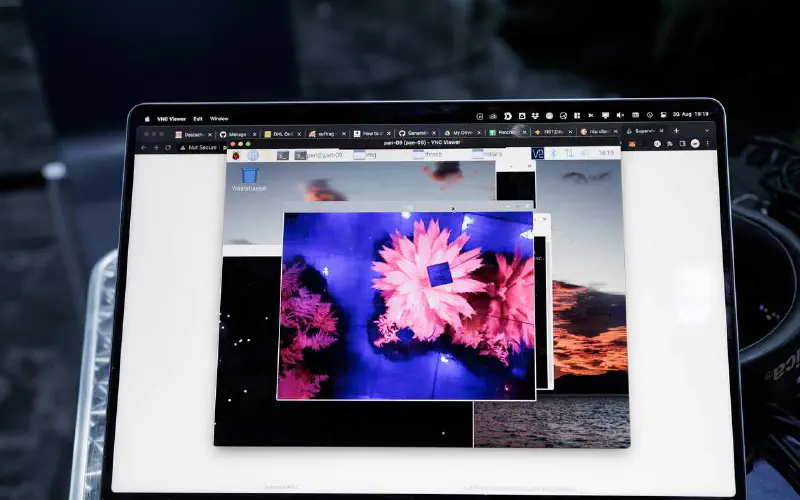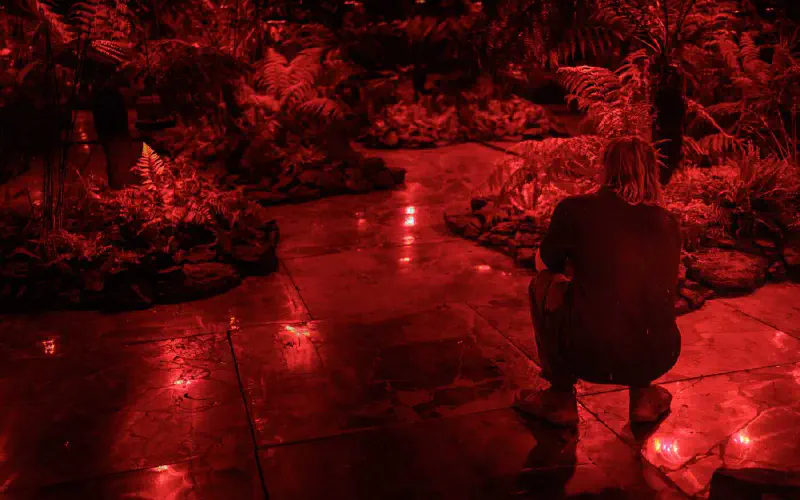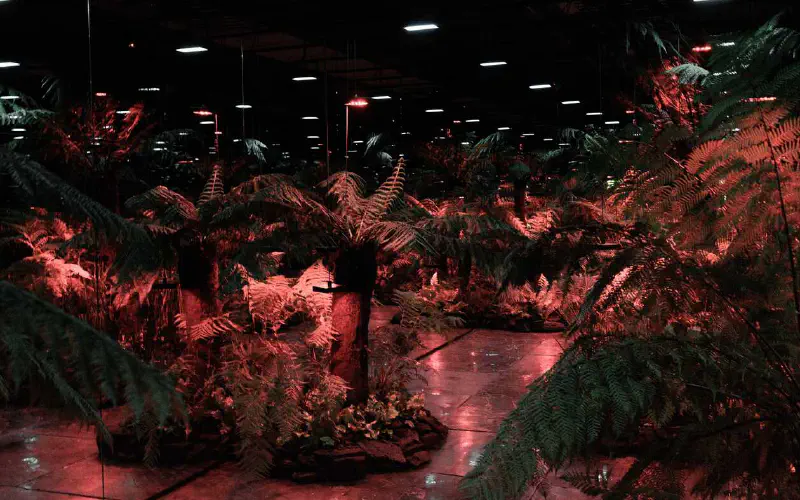Panchronic Garden
Julian Charrière (2022)
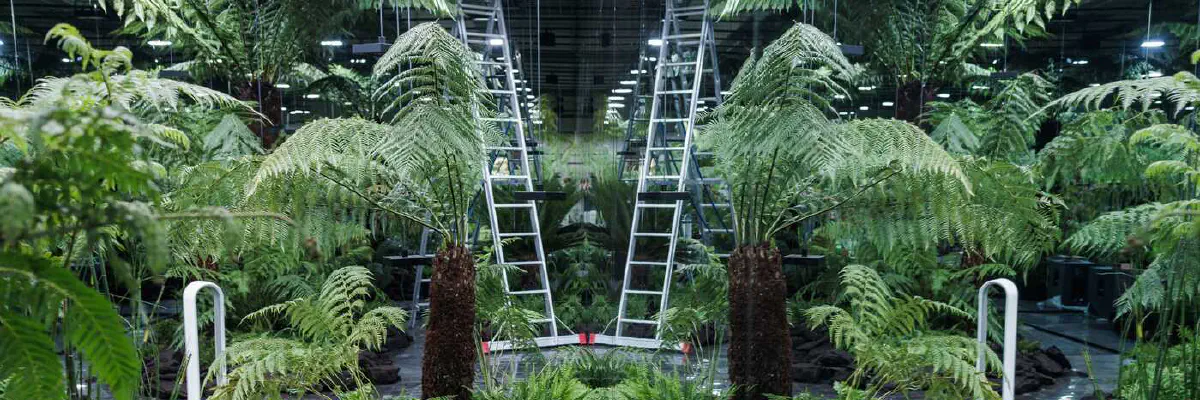
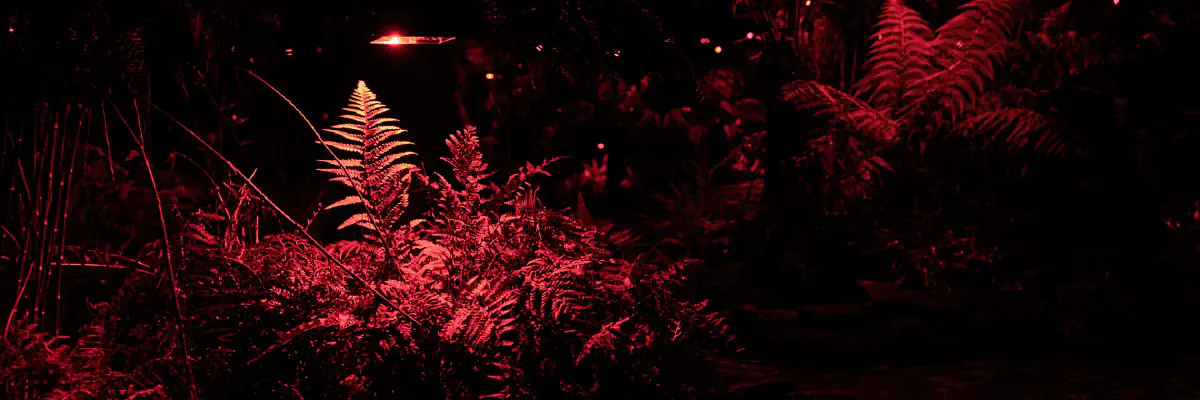
From the project description by Julian Charrière (accessed 2024-03-28):
From Carboniferous forests to the smokestacks of the Industrial era, Panchronic Garden journeys some 300 million years through time, inviting visitors to commune with the woodlands that today constitutes our coal fields.
Inside this large-scale immersive installation, the visitor is steeped in darkness, surrounded by vegetation. The vegetal presence is represented by horsetails, ferns and cycads, along with other species which reach back to the biomes that deep time would transfigure into hydrocarbons. Desaturated by infrared lights, this foliage appears blackened, reverberating in red. Entering this subterranean world, the visitor navigates a floor panelled with anthracite, while crackling sounds appear to rush around them. Produced using specialised contact microphones and sensors, Panchronic Garden sonically relays the umwelt of the greenery it hosts, acknowledging the agency of plants as integral co-producers of life on this planet. It is through their transformation of solar energy into matter, that plants have bequeathed altered environs for future generations. In turn, their fossilized sunshine becomes archives of former eras, releasing memories of long dead habitats when burnt as fuel.
Panchronic Garden walks the visitor back, or perhaps forwards, in time, lapsing occasionally into stroboscopic flashes. Within these bright breakages, the forest is again revealed as green and mirror walls lapse into infinity: building a cosmic bridge between seed and coal seam.
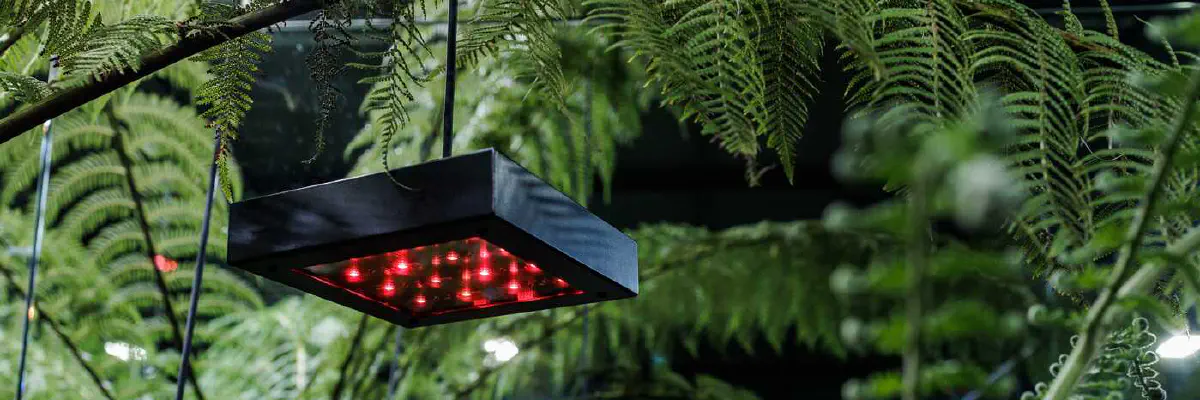
Each island was equipped with custom-designed infrared LED lights, a loudspeaker, and a sensor network. In addition, DMX strobe lights were installed in two rows, creating the illusion of infinite space by help of mirrors placed on all walls of the room. Finally, a people counting sensor was installed at the entrance of the installation, influencing the strobe light trigger when people entered the room.
Based on these elements, Plonk designed a generative light- and soundscape for the installation, which changed its appearance and soundscape according to the plants growth, movement and moisture levels. Within panchronic garden, the intention was to enfold visitors into a space of rather limited audiovisual stimuli, comprising of slow changes (on a time scale of minutes to hours) within the audiovisual system to induce the perception of stasis or extreme deceleration. While the display (both auditive and visual) was catered towards the human senses and time perception, the sensor elements used to influence the soundscape and its visual counterpart were trimmed to rather long timescales, thus taking the plants slower perceptual as well as motor organs into consideration.
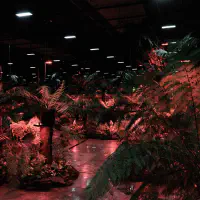
The soundscape of the nine plant islands combined artificially synthesised sounds, recordings of wild fern plants and trees, and underwater recordings in fern-rich wetlands.
Sound example recorded during the installation of “Panchronic Garden” by Julian Charrière at Langen Foundation, 2022.
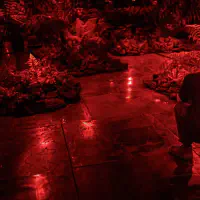
The lighting in the installation is generally low, with each plant island having its own spectral composition. The most active island receives the most light intensity, while the others receive less.
Additional DMX strobes were installed in two rows, creating the illusion of infinite space by help of mirrors placed on all walls of the room.
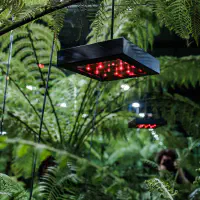
Each island featured between one and seven infrared LED lamps, each with a 4x4 matrix of individually addressable LEDs with a spectral response between 620nm and 740nm.
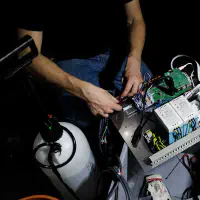
Custom controller board per island for LED lamps, sensors and loudspeaker, based on Raspberry Pi 4
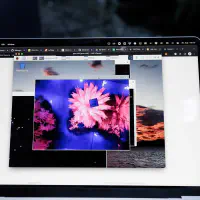
Plant movement as well as growth was measured for each island with a custom-designer computer vision setup based on OpenCV.
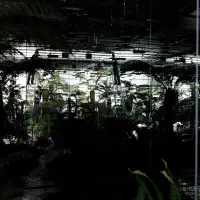
Each island featured sensors to measure barometric pressure, temperature, soil moisture and plant movement (IMU).
